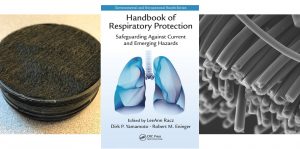Chaaban O, Balanay JG and Sousan S (2022). Assessment of Best-Selling Respirators and Masks: Do We Have Acceptable Respiratory Protection for the Next Pandemic? American Journal of Infection Control (in press). doi:10.1016/j.ajic.2022.06.024
Abstract
Background: COVID-19 pandemic caused a high demand for respiratory protection, caused a scarcity of approved respirators and led to the production of alternative respiratory protection. To raise public awareness through the scientific community, the bestselling respirators and masks in the United States leading online retailer, Amazon.com, were evaluated.
Methods: Ten respirators and masks, 5 Face Protective Equipment (FPE) and 5 Cloth Face Masks (CFMs), were evaluated compared to the N95 standard. The masks were categorized in two groups with the intention of comparing all masks together. The fractional efficiency and pressure drop were measured and compared to the National Institute for Occupational Safety and Health (NIOSH) standards. In addition, grading factors for protection, comfort, and affordability were developed that can be used by the scientific community to readily disseminate to consumers for the selection of the appropriate respiratory protection.
Results: Two FPEs provided acceptable efficiency (>95%) similar to the N95, while the remaining products were below or extremely below NIOSH standards. All products provided pressure drops within NIOSH standards (≤35 mmH20) ranging from 2.3-10.3 mmH20. The grading factors show that the CFMs have minimal protection, and the N95 has average comfort and affordability compared to all the products.
Conclusion: The N95 remains the best respiratory protection, and in the event of the next airborne pandemic, FPEs could serve as adequate alternative protection against the viral spread.
Photo source: Unsplash




